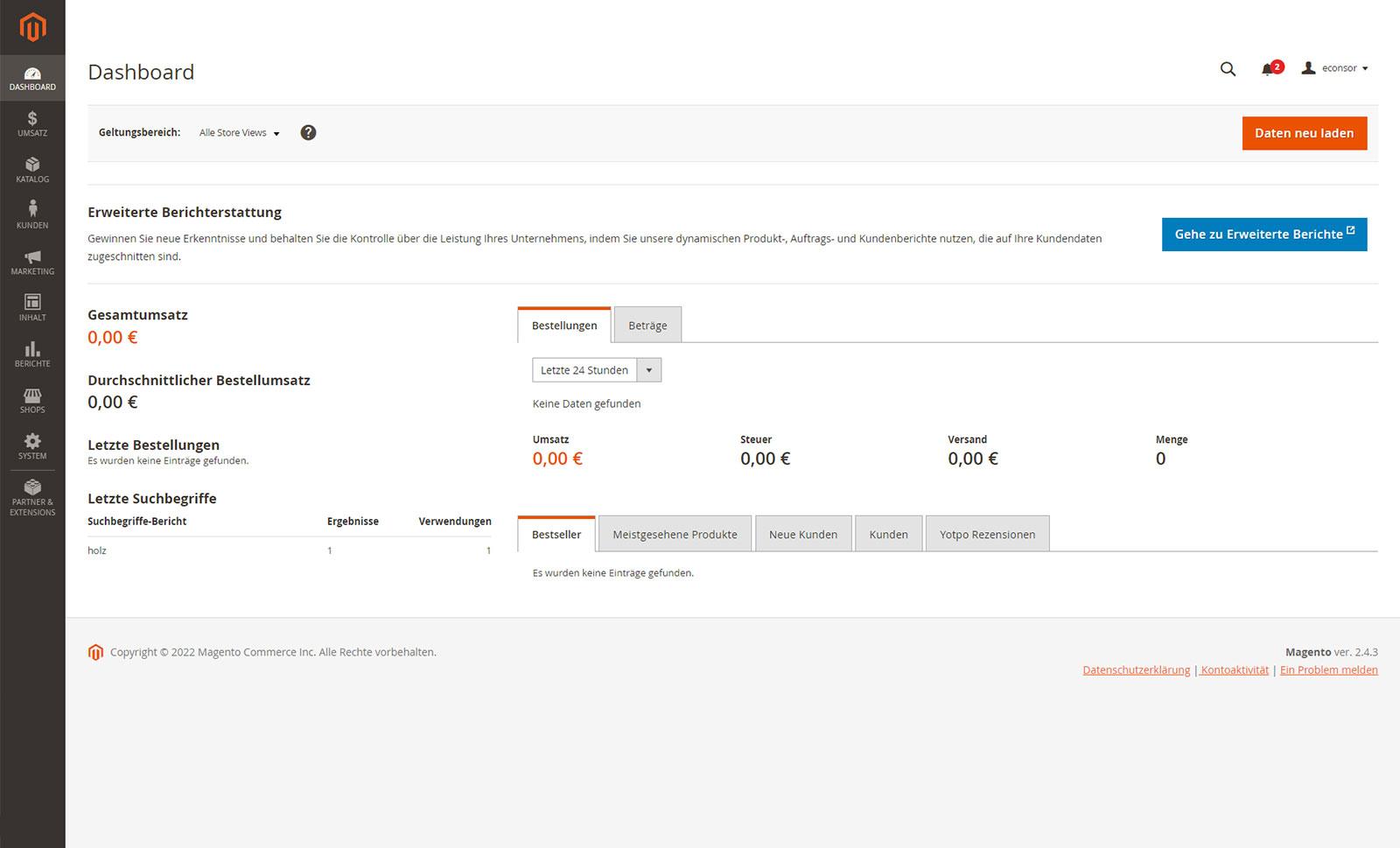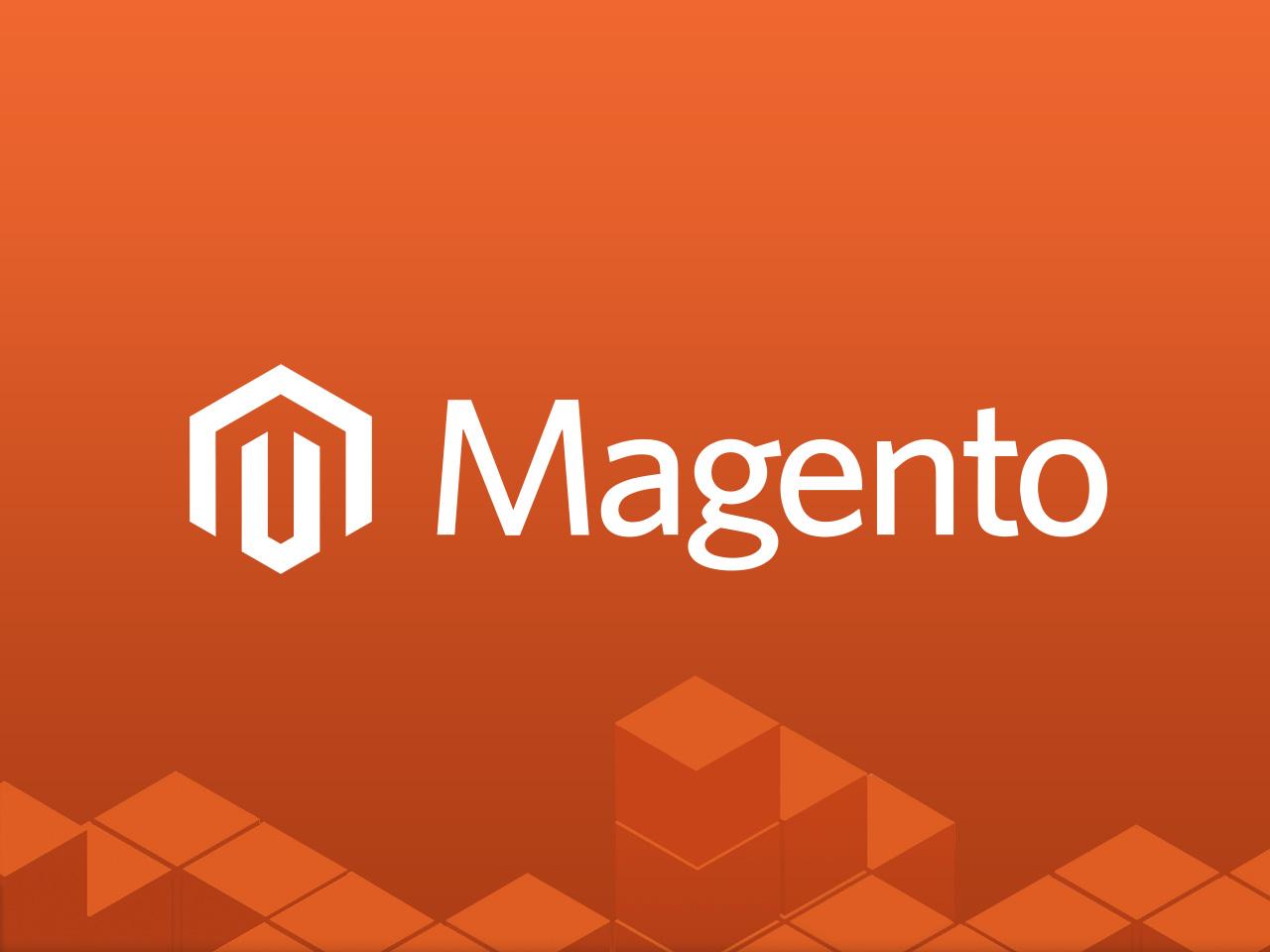When it comes to setting up your e-commerce store, choosing the right platform can feel like a daunting task. With so many options available, how do you narrow it down to the one that best fits your business needs? Two of the heavyweights in the arena are Magento and PrestaShop, each boasting its own set of features, benefits, and user experiences.So, which one is the right fit for you? In this article, we’ll dive into the strengths and weaknesses of both platforms, helping you make an informed decision that aligns with your vision. Whether you’re a budding entrepreneur just starting out or a seasoned pro looking to upgrade your online presence, we’ll explore the ins and outs of both Magento and PrestaShop. Get ready to discover which platform can help you turn your e-commerce dreams into reality!
Understanding the Basics of Magento and PrestaShop
When it comes to eCommerce platforms, two names often come up in discussions: Magento and PrestaShop. Both have their unique strengths and weaknesses, making them suitable for different types of businesses. Understanding the fundamentals of each platform can definately help you make an informed decision for your online store.
Magento is known for its robust features and customization capabilities. It is particularly favored by larger businesses or those anticipating rapid growth. Its modular architecture allows for extensive scalability, which means you can start with basic features and gradually enhance your store as your business grows. Though, this versatility comes at a cost; Magento can be complex to set up and may require a good amount of technical knowledge, especially if you’re considering utilizing its more advanced features.
Conversely, PrestaShop shines in terms of user-friendliness. It’s designed for small to medium-sized businesses that want a speedy and easy setup without sacrificing essential functionalities. The intuitive interface makes it easy for newcomers to navigate and manage their online stores. prestashop also offers a plethora of themes and modules,allowing for customization without overwhelming complexity.
Here’s a quick comparison of some key features:
| Feature | Magento | PrestaShop |
|---|---|---|
| Ease of Use | Moderate to complex | Easy |
| Scalability | High | Moderate |
| Customization | Extensive | Flexible |
| Cost | Higher (especially for hosting and development) | Lower (easy to start, but costs can rise with add-ons) |
Both platforms come with their own set of features that cater to different needs. If you are planning to scale substantially and require refined features like advanced inventory management and customizable workflows,Magento might be the better choice. Conversely, if you’re looking for a straightforward solution without the need for complex functionality, PrestaShop is highly likely your best bet.
In terms of community support, both platforms have vibrant communities. Magento boasts a wealth of resources, forums, and expert developers, while PrestaShop offers a pleasant community of users and several online tutorials.Your choice may ultimately depend on whether you prefer a community with deep technical expertise or one that offers easy access to help.
Ultimately, the decision between Magento and PrestaShop should be based on your business needs, your technical capabilities, and your long-term growth plans. By considering these factors, you can choose the platform that will best support your eCommerce journey.

Comparing Ease of Use for Beginners and Experts
When diving into the world of eCommerce, usability is a paramount concern for both beginners and seasoned professionals. Magento and PrestaShop each cater to different user bases with their own unique strengths and weaknesses in terms of usability.
Beginners often seek a platform that allows for a smooth onboarding process and a gentle learning curve.In this regard, PrestaShop shines brightly. Its user-friendly interface is designed with novices in mind,making it relatively straightforward to set up an online store without a steep learning curve. Key features that enhance its usability for first-timers include:
- Intuitive Dashboard: The dashboard provides a clear overview of sales, orders, and customer activity.
- Simple Configuration: Setting up products, payment gateways, and shipping options is easy and requires minimal technical knowledge.
- Extensive Documentation: prestashop offers detailed guides and a supportive community, making it easier for beginners to find help.
Conversely, Magento, while extremely powerful and customizable, can be a daunting experience for those new to the eCommerce realm. The platform’s complexity requires a more robust understanding of web development and management. For beginners, the challenges often include:
- Steep learning Curve: Understanding Magento’s extensive features and functionality can take time and effort.
- Technical Knowledge Required: Many features require coding skills or advanced configuration, which might not be feasible for everyone.
- Resource Intensive: Magento’s hosting and server requirements are typically higher than those of PrestaShop, which can complicate the setup for novices.
for the experts,the landscape shifts slightly. Magento is often favored due to its high degree of customization and scalability.Experienced developers appreciate its flexibility, allowing them to tailor the platform to meet specific business needs. Some compelling benefits for experts include:
- advanced Customization: The ability to modify almost every aspect of the store, from design to functionality.
- Robust Ecosystem: A vast library of extensions and plugins to further enhance the platform’s capabilities.
- Scalability: magento can handle high-volume sales and a large catalog, making it suitable for growing businesses.
Conversely, experts using PrestaShop can find that while it is user-friendly, it may lack the depth of customization that Magento offers. The platform is robust enough for many businesses but might not satisfy those looking for highly specialized features. A quick comparison of features for experts can be summarized in the table below:
| Feature | Magento | PrestaShop |
|---|---|---|
| Customization | Highly customizable | Moderately customizable |
| Scalability | Excellent for large businesses | Good for small to medium businesses |
| User-Friendliness | Complex for beginners | User-friendly interface |
| Community Support | Strong developer community | Active user community |
Ultimately, the decision between Magento and PrestaShop hinges on the user’s level of expertise and specific business requirements. While PrestaShop wins on ease of use for newcomers, Magento provides the tools and flexibility that seasoned professionals crave. Understanding these differences can definitely help you make a more informed choice based on your unique situation.
Exploring Customization Options and Flexibility

Evaluating Performance and Scalability for Growing Businesses
In the realm of e-commerce, performance and scalability are paramount for businesses looking to grow and thrive. When comparing Magento and PrestaShop, it’s essential to consider how each platform handles increased traffic, transaction volume, and inventory management. Both solutions have their own strengths and weaknesses, which can significantly impact your business’s long-term success.
Magento is renowned for its robust architecture, designed to accommodate large-scale operations.it supports multiple storefronts, powerful inventory management, and extensive customization options. This makes it ideal for businesses expecting rapid growth or those already established with high traffic levels. Though, this power comes with a cost—Magento can be resource-intensive and may require a more meaningful investment in hosting and development.
On the other hand, PrestaShop offers a more lightweight solution that can be easier to manage for smaller businesses or those just starting. Its modular structure allows for easy scalability, enabling users to add features as their business grows. While it may not handle massive volumes as seamlessly as Magento, prestashop’s performance is generally efficient for mid-sized e-commerce operations. This can make it more appealing for businesses that want to maintain lower operational costs while still optimizing for growth.
When evaluating the scalability of these platforms, consider the following factors:
- Hosting Requirements: Magento typically requires more robust hosting solutions to ensure optimal performance, especially as traffic increases.
- Performance Optimization: PrestaShop can frequently enough achieve faster load times with fewer resources, making it a good choice for businesses without extensive IT support.
- Community and Support: Magento has a larger community and more extensive resources for troubleshooting and optimization, which can be invaluable as your business scales.
- Customization Flexibility: Magento shines in customization capabilities, allowing for tailored solutions that grow alongside your business needs.
to further illustrate the differences, here’s a quick comparison of their performance metrics:
| Feature | Magento | PrestaShop |
|---|---|---|
| Ideal Business Size | Large Enterprises | Small to Medium Businesses |
| Average Load Time | 3-5 seconds | 2-4 seconds |
| Customization Level | Very High | Moderate |
| Hosting Cost | High | Low to moderate |
Ultimately, the choice between Magento and PrestaShop hinges on your specific business requirements and growth projections. If your vision includes considerable scaling and a diverse product offering, Magento may be your best bet despite higher initial costs. Alternatively, if you’re looking for an agile, scalable solution that won’t break the bank, PrestaShop coudl be the perfect fit. Assessing your performance needs and potential growth trajectory is key to making the right decision for your e-commerce venture.
Analyzing Cost Factors: Which Platform Fits Your Budget?
Understanding the Costs Associated with Magento and PrestaShop
When it comes to selecting an eCommerce platform, cost can be a deciding factor. Both Magento and PrestaShop come with their own pricing models and associated costs that can impact your bottom line.Let’s break down what you need to consider.
Upfront Costs
Both platforms offer open-source versions that can be downloaded for free, but that’s just the tip of the iceberg:
- Magento: If you opt for Magento’s Commerce edition, you can expect to pay a significant annual fee.This version is packed with advanced features ideal for large businesses.
- PrestaShop: the core software is free, but you will likely need to invest in modules and themes to get the most out of it.
Hosting and Maintainance Costs
Another essential aspect of your budget is hosting and maintenance:
- Magento: Requires robust hosting capabilities which can lead to higher monthly expenses. You’ll need a server that can handle its resource-intensive nature.
- PrestaShop: Generally lighter on resources, allowing for cheaper hosting options. Though,be prepared for potential additional costs if you need premium modules or custom development.
Development and Customization
customization is key for an eCommerce site, but it can vary in cost:
- Magento: Due to its complexity, hiring experienced developers can be costly. You may end up spending more on development than you initially planned.
- PrestaShop: Easier for less experienced developers to manage, allowing for lower development costs and quicker turnaround times.
Ongoing Costs
Don’t forget to factor in ongoing operational expenses:
| Cost Type | Magento | PrestaShop |
|---|---|---|
| Themes & Modules | high | Moderate |
| support & Maintenance | High | Variable |
| SEO & Marketing Tools | Moderate | Low |
Choosing between Magento and PrestaShop requires you to closely examine these cost factors. While Magento may offer powerful capabilities for larger enterprises, PrestaShop can provide a cost-effective solution for smaller businesses or those just starting. Assessing your budget and long-term growth plans will ultimately guide you to the right platform.
Examining Customer Support and Community Resources
When choosing an eCommerce platform, customer support and community resources can significantly influence your experience and success. Both Magento and PrestaShop offer distinct advantages in this area, catering to different types of users and business needs.
Magento boasts a robust support system and extensive documentation.As a leading platform,it provides:
- Professional Support: Magento offers different tiers of professional support,ensuring that businesses can access expert help when they encounter complex issues.
- Comprehensive Documentation: The official Magento documentation is extensive, covering everything from installation to advanced features, making it easier for developers and store owners to find solutions.
- Community Forums: The Magento community is vast, with forums and discussion boards where users can share experiences and solutions, fostering a collaborative surroundings.
Conversely, PrestaShop focuses on community-driven support, which can be incredibly beneficial for smaller businesses and those looking for cost-effective solutions. Here’s what it offers:
- Active Community: PrestaShop has a lively community of developers and users who actively contribute to forums,providing a wealth of knowledge and support.
- documentation and Tutorials: While not as extensive as Magento’s, PrestaShop offers helpful documentation, along with numerous tutorials available on various platforms, including YouTube.
- Marketplace for modules: The PrestaShop marketplace is filled with add-ons and extensions, many of which come with user reviews and community support, enabling better decision-making for users.
To summarize,the choice between Magento and PrestaShop may come down to your support preferences:
| Feature | Magento | PrestaShop |
|---|---|---|
| Professional Support | Available (Paid) | Limited |
| Community Forums | Yes | Yes |
| Documentation | Extensive | Moderate |
| Marketplace for Add-ons | Yes | Yes |
Ultimately,understanding your specific needs—whether it’s comprehensive support for a large enterprise or community-driven assistance for a small business—will guide you towards the right platform. both Magento and PrestaShop have their merits,but aligning their strengths with your business goals is key to making the best choice.

Integrating Payment Gateways and Shipping Solutions
When it comes to eCommerce platforms, the ability to integrate payment gateways and shipping solutions can significantly influence your choice between Magento and PrestaShop. Both platforms offer robust features, but their approaches and capabilities differ, making it essential to consider your business needs.
Magento is renowned for its flexibility and scalability, which extends to its payment and shipping options. With Magento, you can easily integrate a variety of payment gateways such as:
- PayPal
- Stripe
- Authorize.Net
- Braintree
- Square
Additionally, Magento supports multiple currencies, making it an excellent choice for businesses looking to expand internationally. Its shipping solutions are equally comprehensive, allowing for:
- real-time shipping rates
- Integration with major carriers like FedEx, UPS, and DHL
- Flexible shipping rules based on customer location or product weight
On the other hand, PrestaShop offers a more straightforward approach to payment and shipping integrations, which can be appealing for smaller businesses or those just starting out. PrestaShop supports various popular payment gateways,including:
- PayPal
- Stripe
- Amazon Pay
- Bank transfer
Moreover,PrestaShop provides a user-friendly interface for managing shipping options. You can easily set up:
- Flat-rate shipping
- Free shipping thresholds
- Geo-localization settings for accurate shipping costs
| Feature | Magento | PrestaShop |
|---|---|---|
| Payment Gateways | Highly customizable, extensive options | Easy setup, popular options available |
| Shipping Options | Real-time rates, multiple carriers | Flat-rate, free shipping settings |
| International Support | Multi-currency support | Geo-localization features |
your choice will largely depend on the scale and needs of your business. if you anticipate rapid growth or have complex requirements, Magento’s extensive integration capabilities might be the right fit. Conversely, if you’re looking for a simpler, more user-friendly setup without too much overhead, PrestaShop could be your best bet. Evaluating the long-term vision for your online store will help you make a more informed decision.

assessing SEO Features and Online Visibility
When it comes to eCommerce platforms, both Magento and PrestaShop come equipped with a suite of SEO features that can significantly impact your online visibility. Though, the way these features are structured and the level of control they offer can vary greatly between the two platforms.
Magento is renowned for its robust SEO capabilities. It allows you to customize:
- Meta Titles and Descriptions: Tailor your meta information for every product and category page.
- URL Structures: Create SEO-friendly URLs to boost your search ranking.
- Canonical Tags: Prevent duplicate content issues with ease.
- XML Sitemap Generation: Automatically generate sitemaps to help search engines crawl your site more efficiently.
Conversely, prestashop also offers solid SEO functionalities, but with a more user-friendly approach.Key features include:
- Easy URL Management: Customize URLs without technical knowledge.
- Customizable Meta Information: Set meta tags for products and categories seamlessly.
- friendly Redirection: Built-in tools to manage 301 redirects easily.
To provide a clearer comparison, let’s take a look at a quick side-by-side comparison of some key SEO features:
| Feature | Magento | PrestaShop |
|---|---|---|
| Meta Management | Advanced customization | User-friendly interface |
| URL Customization | Highly flexible | Simple and straightforward |
| Canonical Tags | Yes | No (requires a module) |
| XML Sitemap | Automatic generation | Manual setup required |
Ultimately, the choice between Magento and PrestaShop for SEO should be informed by your specific needs. If you seek a robust, customizable solution and are ready to handle a steeper learning curve, Magento might be your best bet. Conversely, if you prefer an easier setup with essential SEO features, PrestaShop could be the ideal fit. Your platform selection can significantly influence your online visibility and ultimately your eCommerce success.

Weighing Security and Compliance Considerations
When choosing between Magento and PrestaShop, it’s essential to take into account the security and compliance aspects of each platform. Both systems offer a range of features designed to protect your online store, but they approach security from different angles.
Magento is known for its robust security capabilities, particularly useful for larger businesses that handle sensitive customer information. Some key features include:
- Regular security updates and patches
- Built-in two-factor authentication
- Support for PCI compliance, essential for processing credit card transactions securely
However, maintaining Magento’s security often requires a dedicated IT team, as its complexity can introduce vulnerabilities if not managed correctly.
On the other hand,PrestaShop offers a more user-friendly interface,which can be beneficial for small to medium-sized businesses. Its security features include:
- Regular updates to the core software
- SSL compatibility for encrypting data
- A variety of security modules available to enhance protection
While PrestaShop does not come with as many built-in security features as Magento, its simplicity makes it easier for smaller teams to implement best practices without extensive technical knowledge.
Compliance is another critical factor to consider. For businesses operating in regions with strict data protection laws, such as GDPR in Europe, both platforms can be configured to meet compliance requirements, but the level of effort varies:
| Platform | Compliance Effort | support Resources |
|---|---|---|
| Magento | High | Extensive documentation and community support |
| PrestaShop | Medium | User-friendly guides and add-ons |
Ultimately, the decision comes down to your specific needs and resources. Magento might suit businesses with a larger budget and a focus on extensive customization, while PrestaShop appeals to those seeking a straightforward setup without sacrificing essential security measures.Evaluating your capacity to maintain these platforms will significantly impact your choice.

Making the Right Choice for Your business Needs
Choosing the right eCommerce platform is crucial for your business’s success. With so many options available, it’s essential to evaluate your unique requirements and how each platform aligns with your goals. Magento and PrestaShop are two popular choices, each with its own set of features, advantages, and potential drawbacks.
When considering Magento,you should keep in mind its robust capabilities,particularly for larger businesses or those anticipating significant growth. Its features include:
- Scalability: Perfect for businesses looking to scale operations.
- Customization: Offers extensive customization options to tailor your website.
- Multi-store capabilities: Manage multiple stores from a single admin interface.
However, with these advantages come challenges. Magento requires a certain level of technical expertise, which may involve hiring developers. This could result in higher initial costs, particularly for small businesses with tight budgets.
On the other hand, PrestaShop shines with its user-friendly interface. It’s designed for businesses looking for a more straightforward, cost-effective solution. Here are some of its appealing features:
- Ease of Use: Intuitive interface makes it easy for beginners to navigate.
- Lower Cost: Generally more affordable with fewer initial setup costs.
- Strong Community Support: A robust community that provides plugins and assistance.
For smaller businesses or those just starting, PrestaShop can be a fantastic choice.It allows for quick setup and requires less technical skill. However, businesses with ambitious growth plans may find PrestaShop’s scalability to be a limitation.
| Feature | Magento | PrestaShop |
|---|---|---|
| Ease of Use | Requires technical expertise | User-friendly and intuitive |
| Cost | Higher initial investment | Lower setup costs |
| Scalability | Highly scalable | limited scalability |
| Customization | Extensive customization options | Moderate customization |
Ultimately, the choice between Magento and PrestaShop comes down to your specific business needs, budget, and technical capabilities. Evaluate the features and how they align with your long-term goals to make an informed decision. Remember, the right platform can pave the way for future growth and success.

Real-Life Success Stories: Who Thrives on Which Platform?

Final Thoughts: Choosing the Best Platform for Your Future
When it comes to building your online store, the decision between Magento and PrestaShop is pivotal. Both platforms have their own strengths and weaknesses, which can significantly impact your business’s success. It’s essential to assess your specific needs and long-term goals before making a final choice.
Magento is tailored for larger businesses with complex needs. It offers a robust suite of features and scalability, making it perfect for enterprises looking to expand. However, this power comes with a steeper learning curve and higher costs, especially if you opt for the enterprise edition.Conversely, PrestaShop is often seen as a more user-friendly option. Its open-source nature means you can start small and gradually scale your operations without overwhelming your resources.
Here are some factors to consider:
- Budget: Consider the overall cost of ownership, including hosting, development, and maintenance. PrestaShop may offer a more budget-friendly entry point.
- Customization: If your business requires specific features, Magento offers extensive customization options, but at a cost.
- Support: Evaluate the level of support each platform offers. Magento has a larger community,but PrestaShop provides comprehensive documentation.
- Scalability: Think about your growth trajectory. Magento is better suited for high-volume stores, while PrestaShop is ideal for those just starting out.
To give you a clearer view, here’s a simple comparison of the two platforms:
| Feature | Magento | PrestaShop |
|---|---|---|
| Ease of Use | Moderately complex | User-friendly |
| Cost | Higher (especially for enterprise) | Lower initial cost |
| Customization | Highly customizable | Customizable with plugins |
| Support | Extensive community support | Good documentation and community |
Ultimately, the choice between Magento and PrestaShop boils down to your business model, technical expertise, and future aspirations. If you envision your store growing to a large scale with specific functionalities, Magento could be the right fit. Conversely, if you are looking for something approachable that you can grow with, prestashop might just be the perfect solution for your entrepreneurial journey.
Frequently Asked questions (FAQ)
Magento Vs PrestaShop – Which One Is Best For You?
Q&A
Q1: What are the main differences between Magento and PrestaShop?
A1: Great question! Magento and PrestaShop are both excellent eCommerce platforms, but they cater to different needs. magento is a powerhouse suited for larger businesses that require extensive features and scalability. It offers robust functionalities,but it can be quite complex. PrestaShop, on the other hand, is user-friendly and ideal for small to medium-sized businesses.It’s easier to set up and manage, making it perfect if you’re just starting out or if you prefer simplicity.
Q2: Which platform is more user-friendly for beginners?
A2: If you’re new to eCommerce, PrestaShop is likely your best bet. its intuitive interface allows you to navigate the setup process without feeling overwhelmed.On the flip side, while Magento offers extensive customization options, it has a steeper learning curve. So,if ease of use is your top priority,PrestaShop could be your go-to choice.
Q3: How do the costs compare between Magento and PrestaShop?
A3: Cost can be a deciding factor! PrestaShop is an open-source platform, which means it’s free to download and use. Though, you might incur costs for themes, modules, and hosting. Magento also has a free version (Magento Open Source), but it tends to be more expensive especially for Magento Commerce, which offers advanced features and support. PrestaShop is generally more budget-friendly for startups, while Magento is an investment that pays off for larger operations.
Q4: What about customization options? Which platform offers more flexibility?
A4: When it comes to customization, Magento takes the crown. Its extensive features allow for a high level of customization, making it suitable for businesses with specific needs. You can tailor just about every aspect of your store! PrestaShop also offers customization options but is somewhat limited compared to Magento.So, if unique and complex custom functionalities are crucial for your project, Magento might be the way to go.
Q5: Can I handle SEO effectively on both platforms?
A5: Absolutely! Both Magento and PrestaShop are SEO-friendly right out of the box. They offer tools that help you optimize your store for search engines,like customizable URLs,meta tags,and more.However, Magento provides more advanced SEO capabilities, which can give you an edge if you’re competing in a crowded market. If SEO is a high priority for your business,keep that in mind!
Q6: What about support and community?
A6: This is where Magento shines! It has a vast community of developers and users,meaning you can find plenty of resources,forums,and support. If you need help, you’re likely to find it quickly. PrestaShop also has a supportive community, but it’s not as extensive as Magento’s. That said, PrestaShop is known for its user support and comprehensive documentation, which can be quite helpful for beginners.
Q7: Which platform scales better as my business grows?
A7: Magento is designed for scalability, making it a fantastic choice if you anticipate significant growth. It can handle large catalogs and high traffic with ease. prestashop can also scale, but you might encounter limitations as your business expands. If you’re aiming for the stars, Magento is your best bet for future-proofing your eCommerce venture.
Q8: So, which platform should I choose for my business?
A8: It ultimately depends on your needs! If you’re a small to medium-sized business looking for an easy setup and decent features, go with PrestaShop. It’s user-friendly and budget-conscious. However, if you’re a larger business with specific needs and the resources to manage a complex platform, Magento is likely the better choice. Consider your business size, budget, and future goals, and you’ll find the perfect fit!
Conclusion
whether you choose Magento or PrestaShop, both platforms offer fantastic opportunities for creating a prosperous online store. The key is to assess your business needs, technical abilities, and future aspirations before making a decision. Happy selling!
Final Thoughts
As we wrap up our exploration of Magento and PrestaShop, it’s clear that both platforms have their unique strengths, tailored to different needs and business goals. Whether you’re a small business owner just starting out or a large enterprise looking for robust solutions, the choice ultimately depends on your specific requirements, budget, and technical expertise.
Magento shines with its scalability and extensive features, making it ideal for larger businesses with complex needs. Conversely, PrestaShop offers an intuitive interface and flexibility that can be perfect for smaller shops or those who want to get up and running quickly without the steep learning curve.
So, which one is best for you? Consider your business size, your growth plans, and how much time you’re willing to invest in learning a new system. don’t hesitate to take advantage of free trials and demos to get a feel for each platform. Remember, the right choice will empower you to create an online store that not only meets your current needs but can also grow alongside your business.
it’s about finding the perfect fit for you. Whichever path you choose, we hope this comparison has equipped you with the insights you need to make a confident decision. Happy selling!


